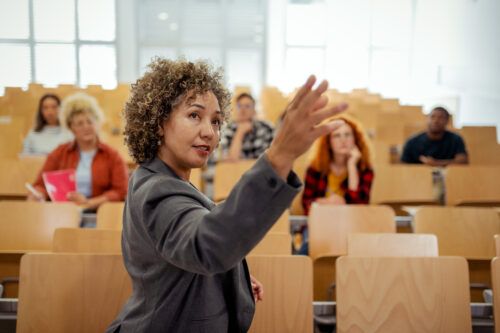Discover the main attractions for teaching a practical subject in FE
jobs.ac.uk have put together this article to help guide you on where to start when teaching a practical subject in further education.
Main attractions
One of the main attractions for learners when choosing to study a vocational course at a Further Education college is they can feel confident that their teachers will have worked in industry before joining the FE sector.
The term “dual professionalism”, is often used to describe the two areas of vocational teachers’ expertise: their subject specialism and the knowledge and skills needed to teach it.
It is not uncommon for practitioners to gain employment straight from industry, with many undertaking a teacher education course after starting work at a college.
Some may continue to work part-time alongside their teaching commitments, whilst others will endeavour to keep themselves current by maintaining close links with employers and attending commercial updates and training.
“Vocational pedagogy” is the term coined by Lucas, Spencer & Claxton in 2012 to describe the specific knowledge and skills required to teach a subject.
This provides a clear route into a working role, making a distinction between courses with a practical element and subjects classified as being more “academic”.
This seminal piece of research highlights nine key features of this type of teaching, which include:
- Learning from experts
- Practising
- Hands-on
- Feedback for learning
- One-to-one
- Real-world learning
- Against the clock
- Online
- Anytime
Many vocational courses provide a combination of learning in real or simulated learning environments (workshop, salon, restaurant, kitchen, animal unit, etc), where these pedagogies sit quite comfortably and classroom-based teaching.
Thus making a clear distinction between practical and theory sessions.
The challenge many teachers face as they make the transition from single to dual professional is to blend these two environments as far as possible, to avoid replicating a traditional classroom experience, where learners might not previously have succeeded, whilst incorporating elements of theory within practical settings.
This is a challenge, but can be overcome in several ways.
In the classroom
Layout
Plan this to create a collaborative, inclusive environment to suit your learners. 5 minutes taken at the beginning of the lesson to move furniture and stick posters on the wall will pay dividends.
Realia
It is not always possible to take the learners out to the real world, so, bearing health and safety considerations in mind, bring it to them. Tools, products, models, pictures, and even parts of machinery can all be brought into the classroom to help learners make connections between knowledge and skills.
Activity
Plan for plenty of tasks designed to keep learners involved in the learning. If you do have a lot of content to get through and have created or inherited some high-quality slides to support this, then invite learners in pairs to ask questions, or predict the content of each slide before revealing it.
Check their note-taking skills from time to time, too. This can be very revealing! Inject movement by sticking information cards up on the walls, so that learners have to circulate the room to find the answers to questions.
In the workshop
Interactive demonstrations. Before doing a practical demonstration for learners to watch, create a card-sort or drag-and-drop activity where learners predict the correct order of the different stages of the task.
Alternatively, encourage learners to ask questions or predict the stages verbally they observe you carrying out.
To firmly embed maths and English into your vocational subject, set up a Maths and English zone to enable learners to put these functional skills into immediate context. This can be a space where learners access dictionaries and calculators, as well as having worksheets to complete or information to read.
A vocabulary box could be set up in a container relevant to their subject specialism. For example, an empty hard hat, bird box, or (clean!) food carton for learners to self-test or play definition games as a starter activity.
Technology
Learners can take photos of work in progress or record themselves carrying out a process. These can be narrated, annotated, or incorporated into a blog there and then using mobile devices.
Context and relevance are of the utmost importance when teaching a practical subject. Seek out any opportunities to highlight how the lesson content will help learners achieve their chosen career goal. You will then find yourself with a highly motivated group of learners who make substantial progress over the timespan of their studies.
jobs.ac.uk has a wide variety of articles covering further education in teaching. Explore them below:
- Career Paths for Teachers in Further Education
- Getting Into Further Education Teaching
- What is Teaching in Further Education Really Like?
View jobs in Further Education





Leave a Reply